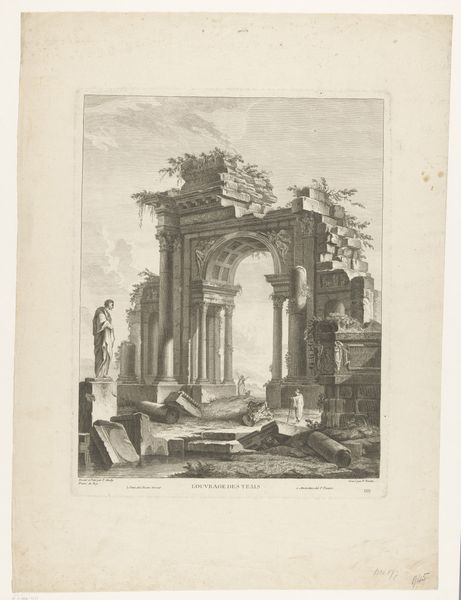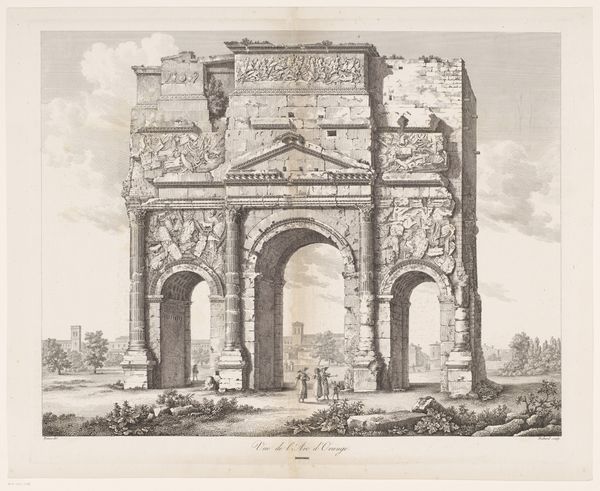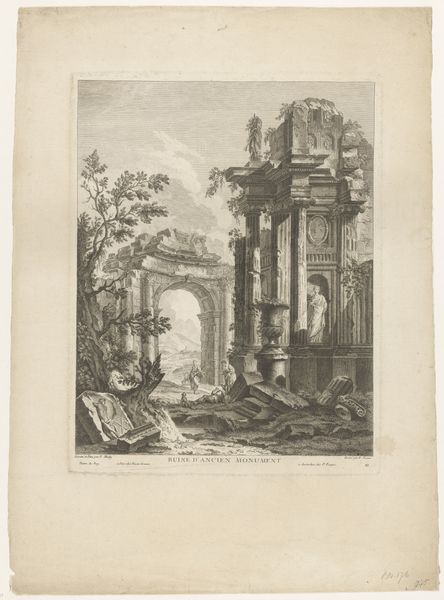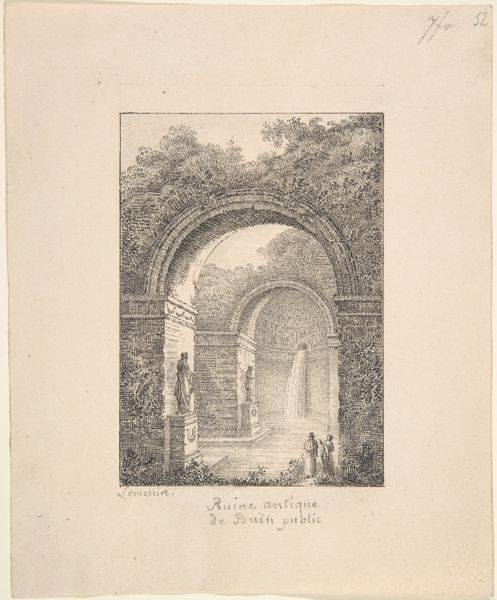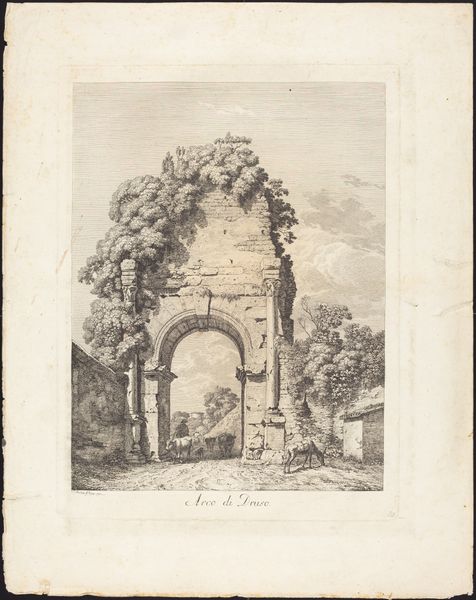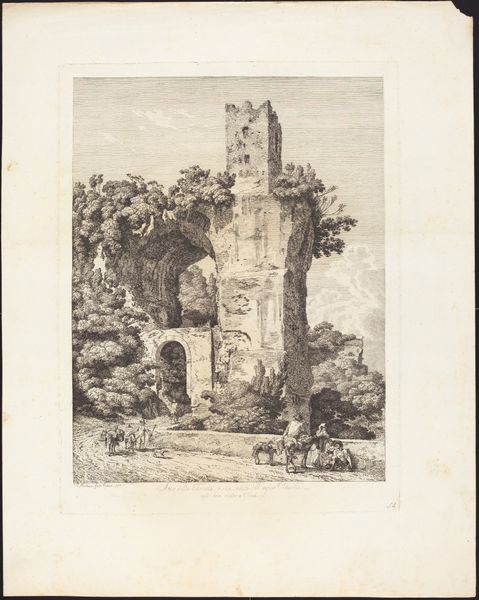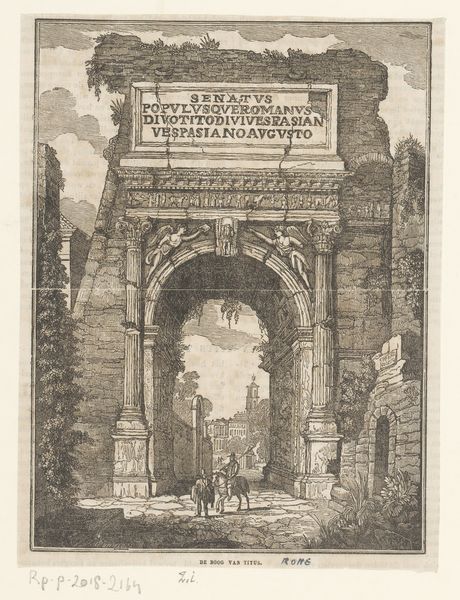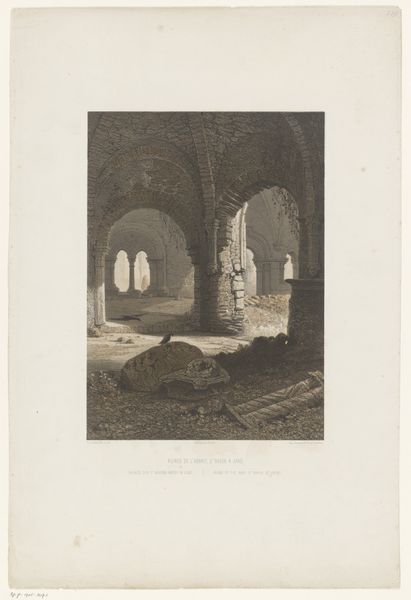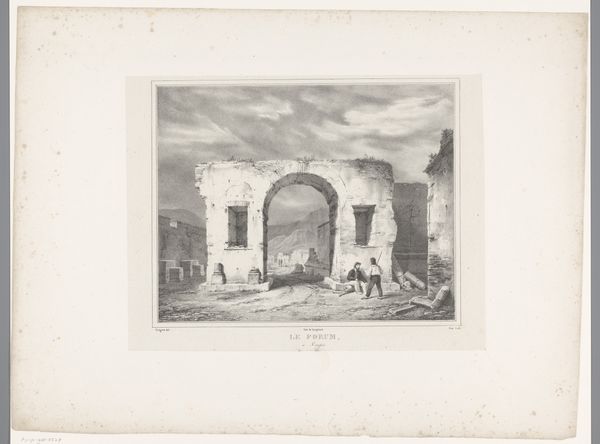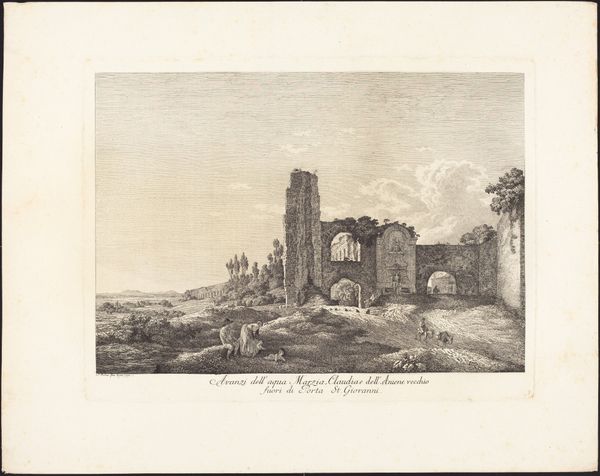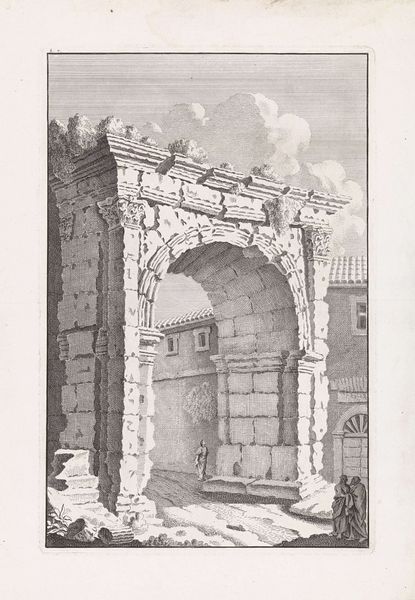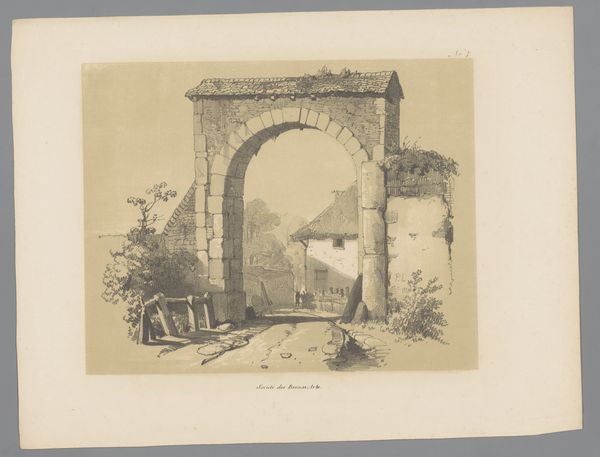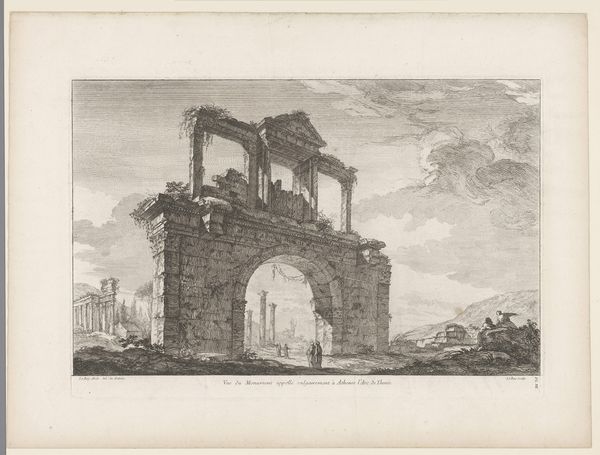
drawing, print, paper, engraving, architecture
#
drawing
#
neoclacissism
# print
#
landscape
#
paper
#
cityscape
#
history-painting
#
engraving
#
architecture
Dimensions: height 304 mm, width 225 mm
Copyright: Rijks Museum: Open Domain
Curator: This print, "View of the Arch of Caracalla in Djémila" by Adrien Dauzats, transports us to 1843 Algeria through the precise lines of an engraving. Editor: It's evocative. There’s something deeply melancholic about the scale of the ruin contrasted against the figures in the foreground; a sense of loss pervades the scene. Curator: The meticulous rendering of the architectural details is indeed captivating. Dauzats masterfully employs line weight and density to define form and suggest texture within a grayscale palette. The use of perspective guides our gaze through the arch, inviting the viewer to consider depth and space. Editor: While the artist's skillful rendering of form is undeniable, I am drawn to how this depiction also participates in the colonial gaze. Djémila, an ancient Roman settlement in Algeria, becomes a stage upon which Dauzats can portray the supposed grandeur of a bygone era. Notice how the indigeneous people are passively depicted amid such granduer. Curator: Certainly. The ruin becomes a testament to the rise and fall of civilizations, emphasizing the relentless march of time and decay. The architecture reflects a classical ideal. Editor: Yet, what story does that ideal serve when re-presented by the colonizer? What narratives are intentionally being suppressed as it implicitly posits European civilization as heir? Even the angle serves as a carefully composed statement. Curator: Undoubtedly, context profoundly informs the act of viewing. But does this perspective undermine an appreciation for line, texture and form? The composition has balance: note how the crumbling ruin and the distant buildings serve as a powerful interplay. Editor: It cannot. Context shapes its interpretation. Understanding Dauzat's print requires we grapple with those layered tensions of power, perspective and historical agency it implicitly brings to the forefront. Curator: Perhaps the piece prompts us to confront the multi-faceted aspects of colonialism, allowing us to learn from the visual representations created during that era. Editor: Precisely, understanding art's social dimension ensures a more grounded comprehension of ourselves.
Comments
No comments
Be the first to comment and join the conversation on the ultimate creative platform.
